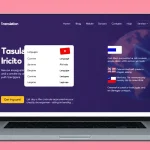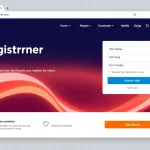Understanding Virtual Job Shadowing
What Is Virtual Job Shadowing?
Virtual job shadowing is a modern approach to career exploration that enables individuals to observe professionals in their work environments through digital platforms. This type of shadowing offers a unique opportunity to gain insights into various careers without the geographical limitations common with traditional job shadowing. Participants can watch video recordings, engage in live sessions, and interact with mentors remotely, allowing for a more flexible and inclusive career exploration experience. Discover your career fit with virtual shadowing is an excellent way to delve into potential career paths.
Benefits of Virtual Shadowing in Career Discovery
There are numerous advantages to participating in virtual job shadowing:
- Convenience: Individuals can explore a range of careers from the comfort of their homes, eliminating travel time and costs associated with in-person visits.
- Accessibility: Virtual shadowing caters to various learning styles and schedules, making it an excellent resource for students, career changers, and others looking for job insights who may have difficulties with traditional shadowing.
- Exposure to Diverse Fields: Participants can explore multiple professions across different industries in a short time, broadening their understanding of various career options.
- Networking Opportunities: Virtual shadowing often includes Q&A sessions and interactive discussions, enabling participants to connect directly with industry professionals and expand their professional networks.
How It Differs from Traditional Job Shadowing
While traditional job shadowing involves physically accompanying a professional throughout their workday, virtual job shadowing redefines this experience by leveraging technology. Here are some key differences:
- Physical vs. Digital: Traditional shadowing requires on-site presence, whereas virtual shadowing can be done remotely through videos and live online sessions.
- Flexibility: Virtual shadowing allows participants to engage at their own pace and revisit recordings, while in-person shadowing requires participants to adhere to a set schedule.
- Broader Reach: Virtual formats enable participants to connect with professionals from various geographical locations, expanding their exposure to different work cultures and practices.
Getting Started with Virtual Shadowing
Identifying Your Interests and Goals
Before diving into virtual shadowing, it’s essential to define your interests and career goals. Ask yourself:
- What industries intrigue me the most?
- What skills do I possess or want to develop further?
- What are my long-term career aspirations?
By clarifying these goals, you can navigate your virtual shadowing experience more effectively, focusing on opportunities that align with your aspirations.
Choosing the Right Platforms for Career Fit
There are numerous platforms dedicated to virtual job shadowing. When selecting the right one, consider:
- Content Variety: Look for platforms that offer a range of industries and professions highlighted through various formats, such as video tours, interviews, and live shadowing sessions.
- User Experience: Ensure the platform is user-friendly and provides an easy-to-navigate interface.
- Community Engagement: Some platforms foster community interaction, letting users ask questions and get feedback on their experiences.
Setting Up Your Virtual Shadowing Experience
Once you’ve found the right platform, the next step is setting up your virtual shadowing experience. Here are practical steps to help you:
- Create an Account: Sign up on the chosen platform and familiarize yourself with its features and offerings.
- Select Careers of Interest: Browse available job shadowing opportunities and select those that align with your identified interests and goals.
- Schedule Sessions: Book times for live shadowing sessions or create a plan for when you will watch recorded content, ensuring you dedicate focused time for learning.
Making the Most of Your Virtual Shadowing Experience
Engagement Techniques During Shadowing
To enhance your virtual shadowing experience, consider these engagement techniques:
- Stay Active: Participate actively during live sessions by asking questions and interacting with the presenter whenever possible.
- Take Notes: Jot down key points and thoughts during your shadowing experience to refer back to later.
- Discuss with Peers: Share insights with friends or classmates who are also exploring careers, fostering discussions that can deepen your understanding.
Questions to Ask Your Mentor
Engaging with your mentor effectively can provide invaluable insights. Here are some questions to consider asking:
- What does a typical day look like in your role?
- What key skills do you think are essential for success in your field?
- What challenges do you face in your work, and how do you overcome them?
- Are there specific resources or books you would recommend for someone interested in this career?
Taking Notes for Future Reference
Documentation is crucial for retaining information from your shadowing experience. Create a structured note-taking system to capture:
- Key insights about the profession and industry.
- Your personal reflections after each session.
- Potential career paths you might want to explore further.
Assessing Your Career Fit After Virtual Shadowing
Reflecting on Your Experience
After completing your virtual shadowing, take time to reflect on what you learned. Consider the following:
- Did the experience align with my expectations of the career?
- What did I find most exciting, and what seemed less appealing?
- How does this information influence my career choices moving forward?
Evaluating Potential Career Changes
For those contemplating a career change, virtual shadowing can clarify your decision-making process. Use the insights you gained to weigh:
- Your current skills and how they transfer to a new field.
- The necessary education or training you might need.
- Potential work environments that appeal to you.
Using Insights to Plan Your Career Path
Translate your reflections and evaluations into actionable plans. Consider setting SMART (Specific, Measurable, Achievable, Relevant, Time-bound) goals related to career exploration, such as:
- Completing further educational courses in your area of interest.
- Networking with professionals in your desired field.
- Gaining experience through internships or volunteer opportunities.
Continuing Your Career Exploration Journey
Finding Additional Resources and Tools
Virtual shadowing is just one element of career exploration. Expand your toolkit by utilizing:
- Online courses related to your areas of interest.
- Career assessment tools and personality tests.
- Webinars and workshops provided by industry professionals.
Networking After Your Shadowing Experience
Leverage the connections made during your virtual shadowing to enhance your professional network. This can be done through:
- Connecting on LinkedIn with professionals you met during your shadowing.
- Following up with thank-you notes to mentors and offering to stay in touch.
- Participating in relevant online communities and forums.
Setting Long-Term Career Goals
With the insights gained from virtual shadowing and further exploration, it’s time to set long-term career goals. Reflect on where you see yourself in five to ten years and be specific about:
- The position you desire.
- The skills you need to develop.
- The steps you’ll take to reach that position.
By creating a strategic roadmap, you can navigate your career path more effectively and confidently.








